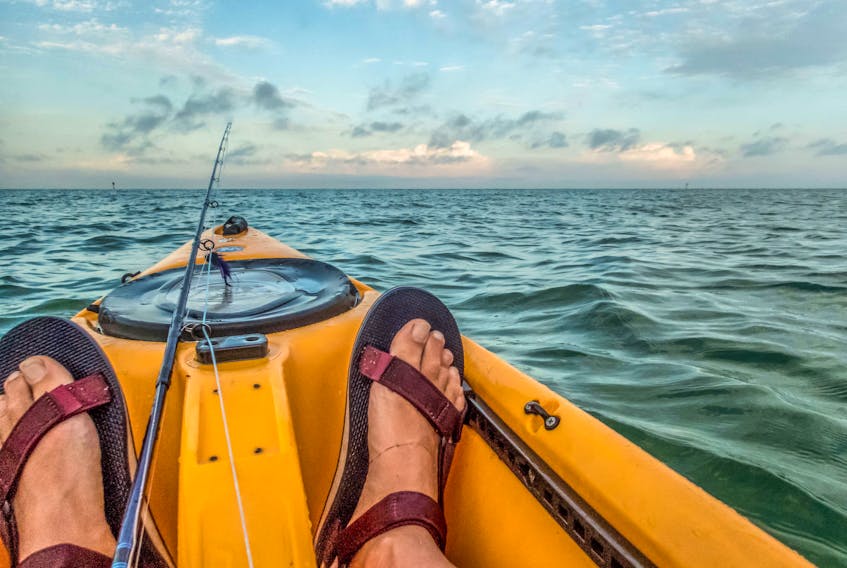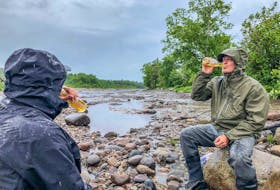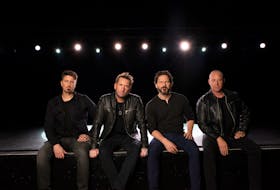It’s going to rain tomorrow. That’s after snow and an intermediate measure of freezing rain and ice pellets.
I suppose that’s a typical sort of weather system here on the Avalon Peninsula, but I never really get used to it, despite living here most of my life. I much prefer to have straight up snow this time of year.
But like I always advise others, I’ll make the best of it. This isn’t much of a winter for snowshoe trekking and winter camping, but there’s always sea trout fishing. Speaking of fishing I’m looking forward to spring and pond trouting for mud trout. This is going to be a short winter no matter how we slice it at this point, and ice out should be early. There’s not much ice to melt.
I’ll be paddling a new kayak when that ice is gone, a fishing kayak to be more precise.
What do I mean by fishing or angling kayak? Well, I suppose you could fish out of any kayak, but indeed there are kayaks designed specifically for us anglers. And I mean kayaks that you actually fish from, as opposed to using a kayak to get from one location to another.

I already had a river-running crossover type of kayak. It’s a Dagger Katana, and it’s wicked for overnight river running trips. But at 10-ft 4-in long and only 27-in wide it’s not much of a platform to fish comfortably from, with either spinning or fly rod. That said, if I were running the Gander River and wanted to fish here and there on the way downstream, this is the right boat.
Specialized angling kayaks are generally of the sit-on-top sort as opposed to the more traditional kayaks that have an inboard cockpit. I’m thinking that the sit–on-top genre began as recreational kayaks and somebody figured they could use them as fishing boats.
No, I just looked it up. In the late 1960’s this dude from Southern California, Tim Niemier, wanted a watercraft that he could carry atop his VW Beetle that he had converted to a camper. It also needed to punch through the ocean swells to get Tim offshore for fishing and skin diving. The fishing kayak was born as a fishing kayak. That makes me happy. Tim fashioned the first one from an old surfboard and then grew a business that evolved into the present day Ocean Kayak Company. Their Trident series are lovely boats. I’d love to paddle one.
These fishing boats are truly unsinkable. That’s why Tim invented them. Canoes and regular kayaks would swamp in the Pacific surf. The sit-on-top cockpit has scupper or drain holes so water splashed in over the side just drains right out. Floatation is achieved by the sealed fore and aft sections of the boat. It’s pure genius. Not only that, but these kayaks are so easy to jump in and out of. I think these boats are perfect for fly fishing our multitude of trout ponds and streams.
This might be my first sit-on-top for fishing here in Newfoundland, but my journey started 12 years ago in Florida.
Actually, it was my very first day in Florida ever. I walked down the street from Gulf Tides Inn, where we were staying, and spotted a small tackle shop. I walked in and met Barry Grady. Enthusiastic and friendly aside, Barry was seriously into kayak angling. He was running charters for tourists. I went kayak fishing with Barry the next day and we have been friends ever since. We have fished everything from tarpon to bass all over the Gulf Coast. I’m really missing it. Damn COVID-19. But I’m optimistic for May 2022.
In the meantime I’m going sit-on-top fishing here at home. I ordered a Perception Pescador 12 from The Outfitters Store on Topsail Road. It’s very similar to the Wilderness System Tarpon 120 that I’m familiar with in Florida. At 12-ft long and 31.5-in wide the Pescador is relatively stable, somewhat quick to turn, and ok fast on flat water. It’s a general purpose fishing kayak with plenty of storage for a day on the water. With decent balance I should be able to fly fish standing up if I feel so inclined.
So if you are considering a sit-on-top kayaking fishing summer of your own what factors must be considered before making a choice of boat? It all depends, like most gear decisions in the outdoor work. It’s all about tradeoff, and you cannot have everything.
Weight is a huge consideration for me. The kayak I chose is 64-lbs. I set my limit at 70-lbs. For me I want a kayak that’s easy to carry solo on my shoulder, for truck to pond and portages. That’s a deal breaker for me. But there is a price to pay for lightweight.

Stability is a function of width and wider is more heavy. I’ve been canoeing all my life and kayaking for a decade, so I can manage just fine in a boat 31.5-in wide, even standing up. If you want to stand and feel less comfortable you may need a wider boat. The Wilderness Systems A.T.A.K 120 is also 12-ft long but is 35-in wide and far more stable, but it weighs in at 85-lbs. So it depends on your priorities.
Wider is also slower. Trouting is not a race but you do need to get where you are going in a reasonable time.
A wider boat will take more energy from your arms, back, and torso to maintain the same speed. The physics is simple and unavoidable. Eat your Wheaties if you expect to go fast in a wide stable boat. Again, this comes down to priorities. If you are sticking to smaller ponds and you don’t plan on long shoulder carries, then knock yourself out if you want stability and extra comfort. For me I like a measure of speed and a easy carry.
Also I’m a good swimmer, meaning I could very well capsize while standing. No odds, I’ve often crawled back into a capsized canoe. But that was decades ago. Not sure if I can still do it.

Hey, sit-on-tops are made for that sort of thing. Right Tim?
What about length? Fishing kayaks typically range from 10 to 14-ft. The skinny is that longer boats track well and short boats are far more maneuverable. So 10-ft boats and better suited to rivers where you need to turn quick and 14-ft boats are easier to paddle fast in a straight line on bigger water, whether it be larger lakes or saltwater bays. The difference is quite remarkable.
I’ve experienced it first hand. I used a Tarpon 140 in Florida and found it clumsy even on bigger water. My 10-ft Dagger Katana is impossible to paddle in a line without dropping the rudder. Albeit, the Katana is not a fishing boat and can turn on a dime to avoid rocks.
There is much more to say but I will save some for another day. You will certainly hear more about my Newfoundland and Labrador kayak fishing adventures, and I hope some of you will join me in this growing sport. I might even have a go at cod fishing or squid jigging. There’s tons of opportunity waiting for adventurous spirits.
Paul Smith, a native of Spaniard’s Bay, fishes and wanders the outdoors at every opportunity. He can be contacted at [email protected] or follow him on twitter at @flyfishtherock.









